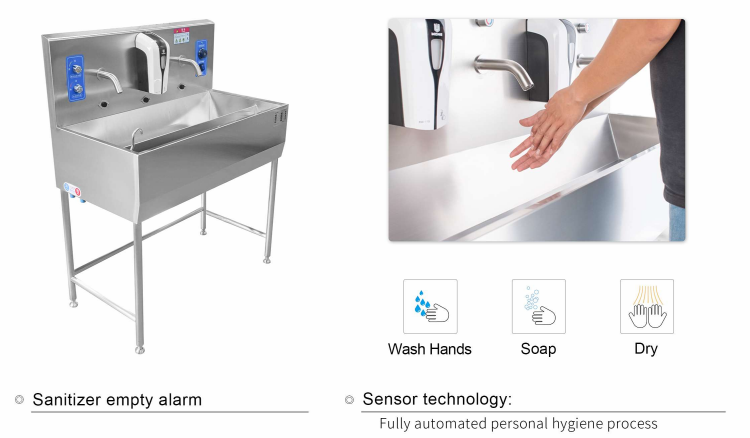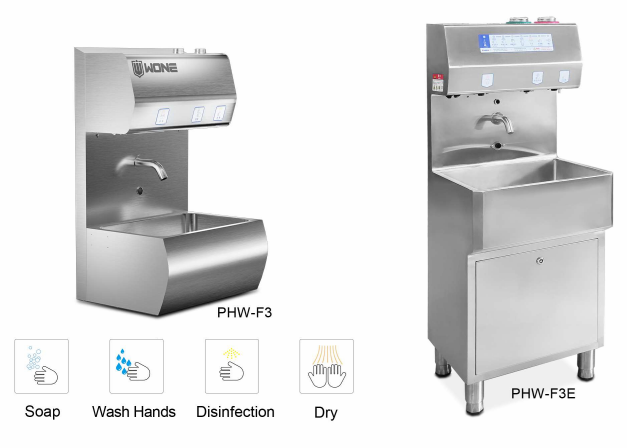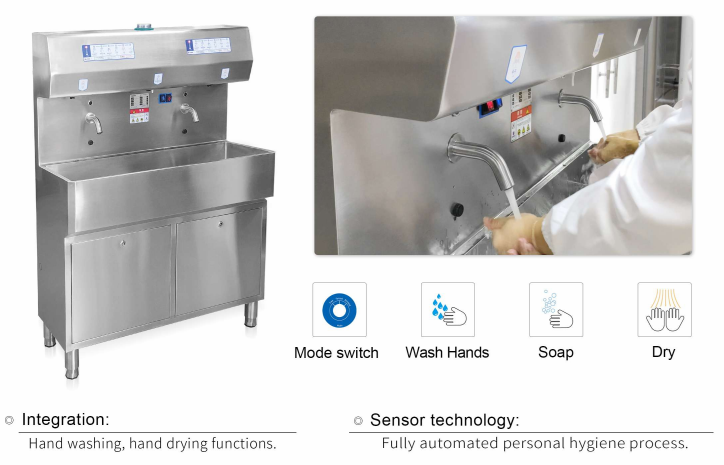Does Personal Hygiene in Your Food Plant Meet the BRCGS Standard?
The BRCGS (Brand Reputation through Compliance Global Standards) is one of the most rigorous benchmarks for food safety and quality
management globally. As consumer expectations and regulatory demands intensify, maintaining compliance with BRCGS standards—espe-
cially in personal hygiene practices—is critical for food manufacturers aiming to protect brand integrity and ensure product safety. This artic-
le explores the requirements for personal hygiene under BRCGS, common compliance gaps, and actionable strategies to align operations
with these standards.
1. The Role of Personal Hygiene in BRCGS Compliance
Personal hygiene is a cornerstone of food safety, directly impacting contamination risks and product integrity. The BRCGS framework emph-
asizes hygiene as part of its broader focus on risk mitigation and quality culture. Key elements include:
Clause 7.2-Personal hygiene: raw material-handling, preparation, processing, packing andstorage areas
- The site's personal hygiene standards shall be developed to minimise the risk of product contamination frompersonnel, be appropriate to the products produced and be adopted by all personnel, including agency-suppliedstaff, contractors and visitors to the production facility.
Clause 7.2.1-The requirements for personal hygiene shall be documented and communicated to allpersonnel.These shall include, at a mini-
mum, the following:
- watches and similar wearable devices shall not be worn
- jewellery shall not be worn, with the exception of a single, plain wedding ring, wedding wristband or medical alert jewellery
- rings and studs in exposed parts of the body, such as ears, noses and eyebrows, shall not be worn
- fngernails shall be kept short, clean and unvarnished
- false fngernails and nail art shall not be permitted
- excessive perfume or aftershave shall not be worn.
Clause 7.2.2-Hand-washing shall be performed on entry to the production areas and at a frequency that isappropriate to minimise the risk of
product contamination.
About wahsing hand, there are more requirements for food factory:
Clause 4.8.4-Suitable and suffcient hand-washing facilities shall be provided at access to, and at otherapproprlate points within, production
areas. Such hand-washing facilities shall provide. at a MnImum:
- advisory signs to prompt hand-washing
- a sufhcient quantity of water at a suitable temperature
- water taps with hands-free operation
- liquid/foam soap
- single-use towels or suitably designed and located air driers
Clause 4.8.5-Toilets shall be adequately segregated and shall not open directly into production or packingareas. Toilets shall be provided
with hand-washing facilities comprising.
- basins with soap and water at a suitable temperature
- adequate hand-drying facilities
- advisory signs to prompt hand-washing
Where hand-washing facilities within toilets are the only hand-washing facilities providedbefore re-entering production, the requirements of
clause 4.8.4 shall apply and signs shallbe in place to direct people to hand-washing facilities before entering production.
Clause 7.2.3-All cuts and grazes on exposed skin shall be covered by an appropriately coloured plasterthat is different from the product
colour (preferably blue) and contains a metal detectablestrip. These shall be site-issued and monitored. Where appropriate, in addition to the
plastera glove shall be worn.
Clause 7.2.4-Where metal detection equipment is used, a sample from each batch of plasters shall besuccessfully tested through the equip-
ment and records shall be kept.
Clause 7.2.5-Processes and written instructions for staff shall be in place to control the use and storageof personal medicines, so as to mini-
mise the risk of product contamination.
For high-risk and high-care zones
Clause 8.4.1
---a hand-washing routine during the changing procedure to prevent contamination of theclean clothing (i.e. hand-washing after hair covering
and footwear have been put on, butbefore handling clean protective clothing)
---hand-washing and disinfection facilities that shall, as a minimum, be situated:- prior to entry for high-risk areas
- on entry for high-care areas



Despite clear guidelines, many struggle with hygiene-related non-conformities. Common issues include:
a. Inconsistent Adherence to Protocols
Handwashing gaps: Employees may skip steps due to time constraints or inadequate supervision. For example, a facility might lack timers
or signage to remind staff of 20-second handwashing rules.
Improper attire: Torn gloves or uncovered hair observed during audits often result in minor non-conformities.
b. Documentation Deficiencies
Incomplete records: Training logs, health screening results, or hygiene inspection reports may be missing or outdated, violating BRCGS’s
emphasis on traceability.
Lack of risk assessments: Facilities may fail to evaluate hygiene risks for specific processes, such as handling allergens or high-moisture
products.
c. Cross-Contamination Risks
Tool misuse: Using non-food-grade brushes or unapproved cleaning chemicals can introduce physical or chemical hazards.
Poor zoning: Without clear segregation between raw and cooked product areas, pathogens like Listeria may spread7.
3. Strategies for Achieving Compliance
a. Implement Robust Monitoring Systems
Environmental swabbing: Regular testing of surfaces and equipment for pathogens (e.g., Salmonella, E. coli) ensures hygiene controls are
effective.
Real-time audits: Use digital checklists to track handwashing compliance or PPE usage, enabling immediate corrective actions.
b. Strengthen Training Programs
Scenario-based learning: Simulate contamination incidents (e.g., glove tears during packaging) to improve crisis response5.
Multilingual resources: For diverse workforces, provide training materials in multiple languages to ensure comprehension1.
c. Leverage Technology
Smart sensors: Install IoT-enabled dispensers to monitor soap and sanitizer usage, alerting managers to replenish supplies or address non-
compliance.
Blockchain traceability: Digitize hygiene records to streamline audits and demonstrate compliance to stakeholders.
d. Foster a Culture of Accountability
Incentivize compliance: Recognize teams with zero hygiene violations through bonuses or public acknowledgmen.
Whistleblower systems: Establish confidential reporting channels for employees to flag hygiene concerns without fear of retaliation.
4. Case Studies: Lessons from BRCGS-Certified Facilities
a. Wanwei Logistics’ Success
Wanwei’s Shanghai and Ningbo cold chain parks achieved BRCGS S&D AA certification by:
Standardizing hygiene protocols: Implementing color-coded tools and allergen-specific zones to prevent cross-contamination28.
Investing in training: Quarterly workshops reduced hygiene-related incidents by 40% in 20248.
b. A Bakery’s Turnaround
A European bakery previously cited for glove misuse resolved issues by:
Introducing tear-resistant gloves: Reduced physical contamination risks by 90%10.
Daily hygiene briefings: Supervisors now review protocols at shift changes, ensuring continuous adherence7.
5. The Future of Hygiene Under BRCGS
The upcoming BRCGS revisions (e.g., Version 9) are expected to:
Expand allergen controls: Require stricter hygiene measures for facilities handling nuts or dairy7.
Emphasize mental health: Recognize stress as a hygiene risk factor, prompting facilities to provide counseling services5.
Conclusion
Personal hygiene is not merely a regulatory checkbox but a critical component of operational excellence under BRCGS. By addressing com-
mon pitfalls, leveraging technology, and fostering a culture of vigilance, food plants can not only meet but exceed these standards. As
BRCGS evolves, proactive adaptation will remain key to safeguarding consumer trust and global market access.


